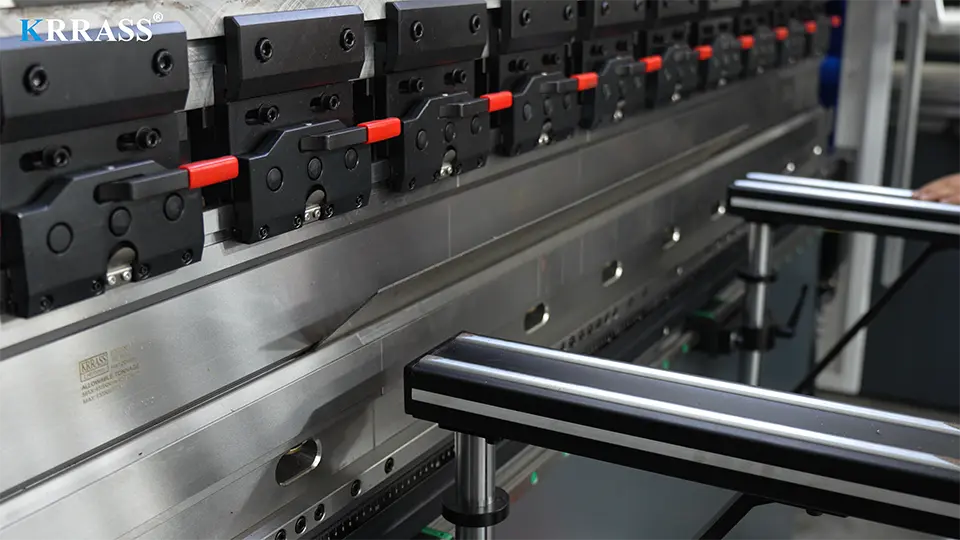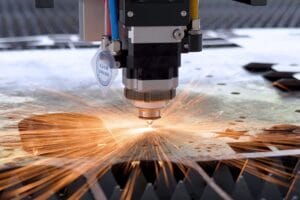In the vast realm of metalworking, the tools and machinery you invest in can be the difference between mediocrity and mastery. As the demand for precision and efficiency grows, the debate between Press Brake and Finger Brake has never been more pertinent. Whether you're a seasoned manufacturer or new to the metal bending arena, understanding these tools' nuances can shape your operational success. Dive with us as we juxtapose these metal marvels, offering insights that might just sculpt your next business decision.
- Overview of Metalworking Tools
- What is a Press Brake?
- What is a Finger Brake?
- The Press Brake Mechanism
- Finger Brake Operation
- Press Brake and Materials
- Finger Brake and Materials
- Press Brake Precision
- Finger Brake Precision
- Press Brake: Safety Guidelines
- Finger Brake: Safety Protocols
- Investing in a Press Brake
- The Financial Aspect of Finger Brakes
- How to Choose: Which One is Right for You
1.Overview of Metalworking Tools
The world of metalworking is intricate, driven by precision, and laden with countless tools designed for specific tasks. In this vast landscape, tools like the Press Brake and the Finger Brake play pivotal roles in shaping and forming metal to precise specifications. But what makes these tools stand out amidst the plethora of metalworking equipment? Let's dive in.
Metalworking, an art as old as civilization itself, has seen numerous innovations and evolutions. Over the centuries, the need for more accurate and efficient tools has grown, especially with the rise of industries requiring minute detailing and unparalleled accuracy. Enter the world of Press Brakes and Finger Brakes – two giants in the realm of precision metal bending.
The Press Brake, often seen in large-scale industrial setups, is a force to be reckoned with. It boasts of robust capabilities, ensuring that large sheets of metal are bent with utmost precision. It’s the backbone of many manufacturing units, especially when consistency and repeatability are the orders of the day.
On the other hand, the Finger Brake, as nimble as its name suggests, provides more flexibility. It’s the go-to tool for workshops that need to make intricate bends and custom designs. While it might not handle the sheer volume that a Press Brake can, it compensates with its versatility, proving that sometimes, size doesn't equate to capability.
2.What is a Press Brake?
Definition and Key Features
A Press Brake is a specialized machine tool designed primarily for bending sheet and plate material, most commonly sheet metal. It employs a flat surface, the bed, and an upper ram that moves vertically to exert force upon the material, creating the desired bend. The nature and shape of the bend are dictated by the die set, which can be switched out according to specific project requirements.
Here are some key features of a Press Brake:
- Adaptability: Comes with interchangeable tooling for various bend profiles.
- Precision: CNC controls allow for precise bends down to fractions of a degree.
- Power: Designed to handle significant force, enabling it to bend thick metal sheets.
- Consistency: Repeatable bending accuracy ensures uniformity across multiple pieces.
- Safety features: Modern Press Brakes are equipped with light curtains or laser safety systems to protect operators.
Primary Uses in the Industry
The Press Brake has carved a niche for itself in various industries, testament to its versatility and prowess. Some primary uses include:
- Aerospace: Crafting components for aircrafts, where precision and consistency are paramount.
- Automotive: Forming parts like chassis components, door panels, and more.
- Construction: Shaping structural components like beams, channels, and supports.
- Manufacturing: Building cabinets, enclosures, and other industrial storage solutions.
- Appliance production: Forming metal parts for household gadgets and machinery.
With an ability to cater to various requirements across different industries, the Press Brake remains an integral part of modern metalworking operations, bridging the gap between raw metal sheets and finely formed components.
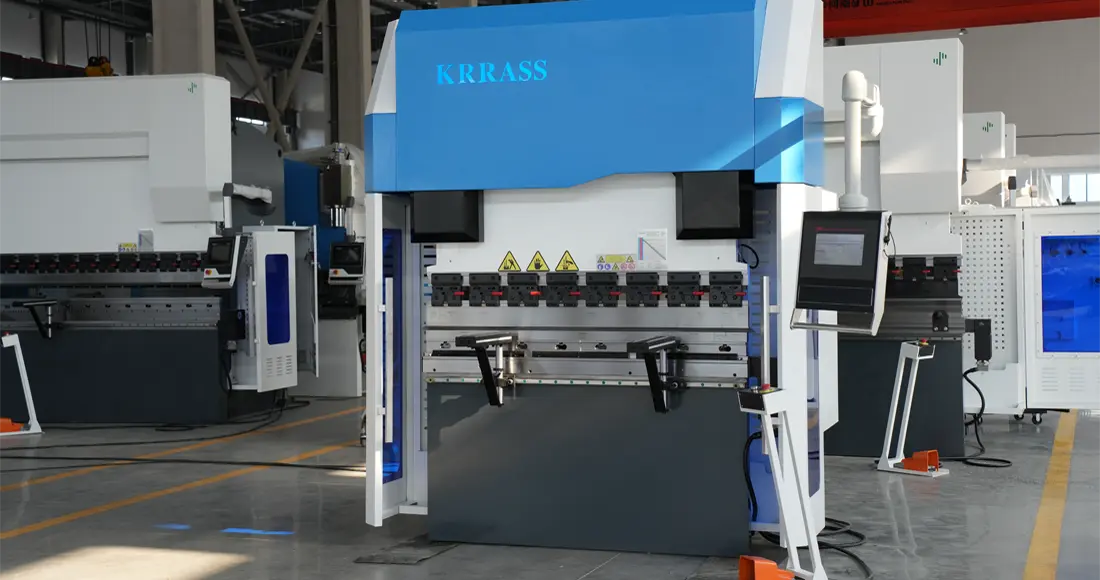
3.What is a Finger Brake?
Definition and Key Features
A Finger Brake, often referred to as a box and pan brake, is a type of manual metal-bending tool. It derives its name from the adjustable fingers on the front of the machine, which can be rearranged to permit bending of specific sections of a sheet, allowing for more intricate bends and designs. Unlike the press brake, which employs a singular bending operation, the finger brake offers greater flexibility in shaping metal.
Here are the standout features of a Finger Brake:
- Flexibility: Adjustable fingers allow for diverse bend profiles and intricate shapes.
- Compactness: Generally smaller than press brakes, making it suitable for smaller workshops.
- Manual Operation: Requires human interaction, ensuring fine control over the bending process.
- Variability: Can handle a range of metal sheet thicknesses with ease.
- Cost-Effective: Given its manual nature, it often comes at a lower price point than automated machines.
Common Applications
The versatility of the Finger Brake makes it a popular choice in numerous sectors. Some of its prevalent applications include:
- Custom Workshops: Creating one-off designs or custom metalwork pieces.
- Prototyping: Developing initial models for new product designs.
- Education: Training students in technical and vocational schools on basic metalworking.
- Art: Crafting sculptures, installations, and other artistic metal pieces.
- Small-Scale Manufacturing: Producing limited runs of products or specialized components.
The Finger Brake's ability to cater to both intricate custom designs and general metalworking tasks underlines its importance in various domains, emphasizing its blend of simplicity and capability.
4.The Press Brake Mechanism
The Bending Process
The heart of a Press Brake is its bending mechanism. At its core, the press brake uses a combination of force, precision, and controlled movement to shape metal sheets into desired forms. Here's a step-by-step breakdown of the process:
- The metal sheet is placed between the punch (upper section) and the die (lower section).
- Upon activation, the punch descends, applying force onto the metal sheet.
- The metal starts to bend at the point of contact with the die, the angle and depth of which is determined by the operator's settings.
- Once the desired bend is achieved, the punch retracts, releasing the now-formed metal piece.
Modern Press Brakes, especially those with CNC (Computer Numerical Control) capabilities, offer even more refined control over the bending process, ensuring consistency and precision across large batches of work.
Types of Dies Used
The versatility of a Press Brake largely hinges on the type of die used. Dies determine the angle, radius, and shape of the bend. Here's an overview of some common dies employed in the industry:
- V-Dies: The most common type, they have a V-shaped channel and are used for forming acute angles.
- U-Dies: As the name suggests, these have a U-shaped channel and are used for forming wider angles.
- Rotary Bending Dies: These eliminate traditional bending methods by using rolling mechanisms to form the metal, resulting in scratch-free bends.
- Offset Dies: Designed to bend two angles in one stroke, allowing for the creation of Z-shapes or offset bends.
- Gooseneck Dies: Characterized by their unique shape, they allow for the bending of deep channels or boxes.
Choosing the right die is crucial as it directly affects the quality of the bend, the speed of operation, and the overall efficiency of the bending process. It's this adaptability, through the use of various dies, that has cemented the Press Brake's position as an invaluable asset in metalworking.
5.Finger Brake Operation
Understanding Box and Pan Bends
When it comes to the world of metal bending, Box and Pan bends hold a special place, often executed with the versatile Finger Brake. This bending method is particularly useful for creating boxes, trays, and pans, hence the name. Here’s a simplistic breakdown:
- Start with a flat sheet of metal with marked bend lines.
- The sheet is placed onto the brake bed, beneath the clamping bar.
- Depending on the desired bend, select and position the appropriate fingers.
- The clamping bar is then secured, ensuring the sheet remains immobile.
- By leveraging the bending leaf, the sheet is bent upwards, forming an angle.
- For box or pan shapes, repeat the process on the other marked lines.
It's this sequence of controlled bends that results in the creation of open rectangular or square shapes, making box and pan brakes invaluable for specific metalworking projects.
Adjusting Fingers for Precise Bends
The magic of the Finger Brake, as the name suggests, lies in its adjustable fingers. But how does one ensure precise bends using these fingers?
- Selection: Begin by selecting the appropriate fingers based on the width and shape of the desired bend.
- Positioning: Arrange the fingers on the bed in accordance with the marked bend lines on the metal sheet. Remember, the positioning determines where the bend occurs.
- Securing: Tighten and lock the fingers in place. Any movement can result in imprecise bends.
- Testing: Before the final bend, conduct a test bend to ensure accuracy. If unsatisfied, readjust the fingers accordingly.
Mastering the art of adjusting these fingers can make the difference between a good and a perfect bend. As with most manual tools, practice, along with understanding the material and machine, ensures consistent precision.
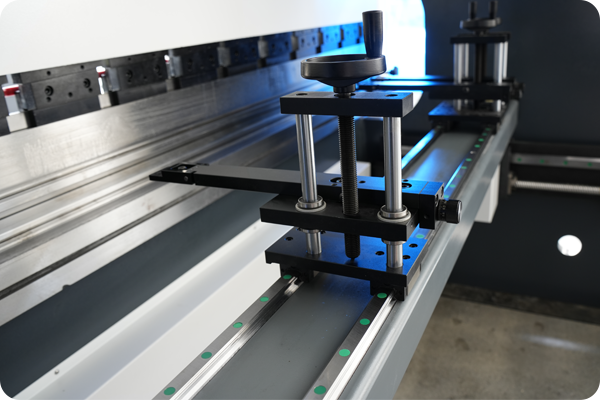
6.Press Brake and Materials
Suitable Metal Types
The strength of a Press Brake lies in its adaptability to handle a plethora of metals, each bringing its unique properties and challenges. Here are some of the most commonly used metals in Press Brake operations:
- Carbon Steel: Known for its durability and tensile strength, it's a popular choice for many fabricators.
- Stainless Steel: Resistant to corrosion and staining, this metal is ideal for applications demanding longevity and aesthetics.
- Aluminum: Lightweight yet strong, aluminum is easy to bend, making it a favorite for automotive and aerospace applications.
- Copper: Highly ductile and malleable, copper is primarily used in electrical components and plumbing fixtures.
- Brass: A copper-zinc alloy, brass offers a mix of strength and ductility, often used for decorative items and hardware.
While these are the predominant metals, a Press Brake's flexibility means it can accommodate other alloys and metals, provided they are within the machine's capacity.
Limitations and Thickness Ranges
No machine is without its limits, and the Press Brake is no exception. The limitations often revolve around the metal's thickness and the machine's tonnage capacity. Here's what you should know:
- Thickness: A standard Press Brake can handle materials ranging from 0.5 mm to 20 mm thick, but high-capacity machines can bend metals up to 50 mm thick.
- Tonnage: The machine's tonnage dictates its bending capacity. For instance, higher tonnage Press Brakes can handle thicker, harder metals with ease.
- Metal Properties: Metals with high tensile strength and hardness require more force to bend, potentially necessitating a machine with higher tonnage.
- Die Width: Using a die that's too narrow for a thick metal can result in damage to the machine or an imprecise bend. It's crucial to match the die width with the metal's thickness.
More Reading: What is Press Brake Tonnage
7.Finger Brake and Materials
Preferred Metals for Best Results
The versatility of a Finger Brake is showcased by its capability to handle a diverse range of metals. Yet, certain metals resonate better with its functioning, ensuring optimum bend quality and efficiency. Here's a closer look at such metals:
- Carbon Steel: With its balanced attributes of strength and ductility, carbon steel is a natural choice for Finger Brakes.
- Aluminum Sheets: The malleability and lightweight nature of aluminum make it an ideal candidate for precise bending operations.
- Brass: Though not as commonly used as the above metals, brass, with its intermediate strength, can be efficiently bent using Finger Brakes, especially for intricate designs.
- Galvanized Steel: This corrosion-resistant metal lends itself well to bending, provided one maintains the right bend radius to prevent cracking of its zinc coating.
The success of bending operations isn't just about the metal choice but also about understanding the metal's inherent properties and matching it with the machine's capabilities.
Restrictions in Material Thickness
While Finger Brakes exhibit flexibility in metalworking, they do have their constraints, especially regarding the thickness of the materials they can handle. Here's what users should be aware of:
- Thickness Range: Finger Brakes can typically handle materials with a thickness ranging from 0.5 mm up to 6 mm. This range, however, can vary based on the machine's make and model.
- Metal Specifics: The material's inherent strength and hardness play a role in thickness limits. For instance, softer metals like aluminum might allow for bending slightly thicker sheets than harder metals like stainless steel.
- Finger Adjustments: Ensure that fingers are adjusted correctly. Trying to bend too thick a material without proper adjustments can result in subpar bends and potential damage.
8.Press Brake Precision
Factors Influencing Accuracy
Precision and accuracy are paramount when using a Press Brake, as they dictate the final product's quality. Several factors influence a Press Brake's accuracy:
- Machine Calibration: Regularly calibrating the machine ensures that its operations align with the set parameters, guaranteeing consistent results.
- Quality of Tools: The use of high-quality, well-maintained dies and punches reduces the likelihood of defects and inaccuracies.
- Material Consistency: Variances in the metal's composition or thickness can lead to bending inaccuracies.
- Operator Expertise: A seasoned operator, familiar with the machine and its nuances, can greatly enhance accuracy through informed decision-making.
- Backgauge Positioning: Accurate positioning of the backgauge ensures that the workpiece is placed correctly relative to the bending tools.
Achieving Tight Tolerances
For projects demanding high precision, achieving tight tolerances is crucial. Here are some strategies and best practices to ensure that a Press Brake operates within these narrow margins:
- Advanced Controls: Modern Press Brakes often come equipped with advanced controls and feedback systems, providing real-time data to adjust operations for optimum precision.
- Use of Crowning Systems: These systems compensate for machine deflections, ensuring that the bending force is distributed evenly across the workpiece.
- Frequent Inspections: Regularly inspecting the machine and tools for wear and tear helps maintain consistent bending operations.
- Precise Material Handling: Using clean, consistent, and defect-free materials ensures that the bends are accurate and within the required tolerances.
- Training: Continual training and upskilling of operators is essential, as it equips them with knowledge about the latest techniques and best practices in the realm of metal bending.
9.Finger Brake Precision
How Adjustments Affect Accuracy
In the world of metal bending, the Finger Brake stands out for its ability to handle complex bends with precision. The accuracy of this tool, however, is significantly influenced by the various adjustments made to it:
- Finger Placement: Proper positioning of fingers is vital. Misaligned fingers can result in uneven bends or damage to the metal sheet.
- Clamping Pressure: Ensuring the correct clamping pressure is crucial. Too much can cause deformities in the metal, while too little can result in slipping during the bend process.
- Backgauge Positioning: Just like with Press Brakes, accurate backgauge positioning in Finger Brakes ensures the workpiece is placed precisely for the bending operation.
- Bend Angle Adjustments: Accurately setting the desired bend angle ensures the final product meets specifications and requires fewer post-bending adjustments.
The Role of Operator Expertise
While mechanical adjustments are essential, the role of the human operator cannot be overstated in achieving the desired precision with a Finger Brake:
- Experience Matters: An operator with hands-on experience can intuitively make the right adjustments, understand the nuances of different materials, and foresee potential challenges.
- Continuous Training: The metalworking industry constantly evolves, and new techniques emerge. Regular training ensures the operator stays updated and can leverage the latest best practices.
- Problem-solving: Even with the best preparations, unforeseen issues might arise. An experienced operator can swiftly troubleshoot and rectify them, ensuring minimal downtime and maintaining precision.
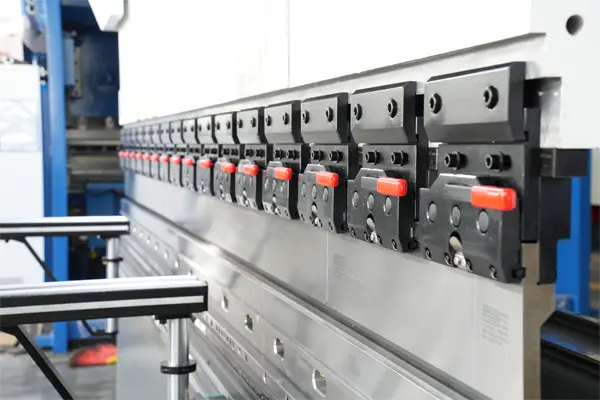
10.Press Brake: Safety Guidelines
Hazards and Risk Mitigation
Operating a Press Brake requires utmost caution as several hazards can jeopardize safety. Recognizing these hazards and understanding ways to mitigate them is the first step toward a safe working environment.
- Pinch Points: Areas where the operator can get caught between the moving parts of the machine. Mitigation: Use safety guards and avoid placing hands near the bending area.
- Flying Debris: Bits of metal or broken tool parts can become airborne. Mitigation: Always wear protective eyewear and maintain a safe distance from the machine while it's operating.
- Overexertion: Continuous operations can strain the operator. Mitigation: Take regular breaks and ensure ergonomic machine setups to reduce fatigue.
- Noise: Prolonged exposure to the noise can impair hearing. Mitigation: Use ear protection like earmuffs or earplugs.
Regular Maintenance Checkpoints
For safe and efficient operation, regular maintenance of a Press Brake is essential. Here are some pivotal checkpoints to ensure that the machinery stays in top shape:
- Hydraulic System: Check for any leaks, inspect the hydraulic fluid levels, and ensure the smooth functioning of pumps.
- Electrical Components: Regularly inspect wiring, connections, and controls for any signs of wear or malfunction.
- Tooling: Examine the tools for signs of wear, cracks, or damage. Replace any compromised components promptly.
- Guards and Safety Features: Ensure all protective guards are securely in place and that safety interlocks and sensors are functioning correctly.
- Cleaning: Regularly clean the machine to remove any accumulated dust, debris, or metal shavings that could affect performance.
More Reading: Press Brake Parts: Guide to Structure and Components
11.Finger Brake: Safety Protocols
Common Risks and Prevention
Like any metalworking tool, the Finger Brake comes with its set of risks. Awareness and proper preventive measures can significantly reduce these risks.
- Pinching and Crushing: The moving parts of the Finger Brake pose a risk of pinching or crushing. Prevention: Always keep hands and fingers away from the bend area, especially during operation.
- Sharp Edges: Metal sheets, especially after being cut or bent, can have sharp edges. Prevention: Handle sheets with gloves and smooth out sharp edges when detected.
- Overexertion: Manual Finger Brakes require physical effort, which can strain the operator. Prevention: Use ergonomic grips, take periodic breaks, and consider hydraulic or mechanical assistance for larger tasks.
- Material Slippage: Improperly clamped materials can slip during bending. Prevention: Ensure materials are securely clamped before applying any force.
Maintenance Recommendations
Routine maintenance of a Finger Brake not only enhances its performance but also ensures safety during its operation. Here are some pivotal maintenance suggestions:
- Lubrication: Periodically lubricate moving parts to ensure smooth operation and reduce wear.
- Check Fingers: Inspect the fingers for any damage or excessive wear. Replace if needed to maintain precision and safety.
- Inspect Clamps: Ensure clamps are in good condition and provide a firm grip on materials.
- Cleaning: Regularly remove metal shavings, dust, and debris from the machine to prevent buildup and potential hazards.
- Guard Inspection: Make sure protective guards are securely in place and are free from damage.
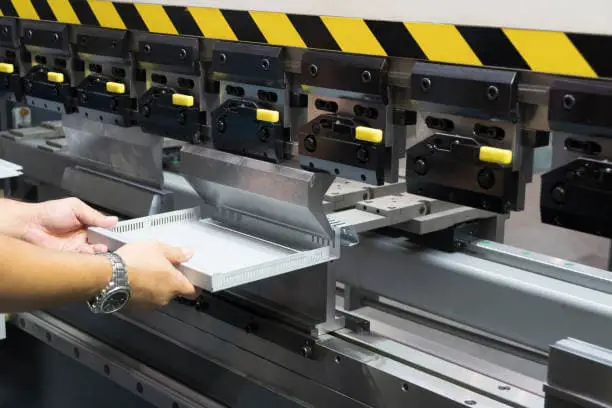
12.Investing in a Press Brake
Initial Purchase Cost
The Press Brake is a significant asset for any metalworking establishment. The upfront investment can be a hefty sum, but it's essential to consider what you're receiving in return:
- Type of Press Brake: Hydraulic, mechanical, and servo-electric Press Brakes come with varying price points. The choice depends on the production requirements and budget constraints.
- Capacity and Size: Larger machines with higher tonnage capacities naturally command a higher price tag.
- Features and Tech: Modern Press Brakes equipped with CNC controls, laser safety systems, or specialized tooling will be on the pricier side.
- Brand and Warranty: Established brands may come at a premium, but they often offer better after-sales service and warranties.
Operating and Maintenance Expenses
Beyond the initial outlay, a Press Brake incurs operational and maintenance costs that need budgeting for sustained productivity and longevity:
- Energy Consumption: Hydraulic Press Brakes, for instance, can consume a considerable amount of power, impacting monthly utility bills.
- Tooling Costs: Over time, tools wear out or might need replacement for specific jobs.
- Maintenance Supplies: Regular lubrication, hydraulic fluid replacements, and other supplies add to the running costs.
- Repairs and Servicing: Occasional servicing and unforeseen repairs are par for the course and should be budgeted for.
- Operator Training: As technology advances, there might be a need for periodic training sessions for operators, which come with their associated costs.
More Reading: CNC Press Brake VS NC Press Brake: What’s the Difference
13.The Financial Aspect of Finger Brakes
Upfront Investment
While Finger Brakes tend to be more budget-friendly than some heavy-duty machinery, there are various factors influencing their initial costs:
- Model and Type: The cost varies depending on whether it's a manual, hydraulic, or pneumatic Finger Brake.
- Size and Capacity: Larger Finger Brakes capable of handling bigger sheets are naturally priced higher.
- Brand Reputation: Premium brands might have a higher price point, but they often come with trusted quality and better customer support.
- Additional Features: Advanced features, such as digital readouts or specialized clamping, can elevate the price.
Recurring Costs
Beyond the initial investment, Finger Brakes, like all machinery, carry ongoing expenses critical to their effective operation:
- Maintenance Supplies: These can include lubricants, replacement parts, and cleaning agents to ensure smooth operation.
- Energy Bills: While manual Finger Brakes won't impact this, hydraulic or pneumatic ones will add to energy consumption costs.
- Tool Replacement: Over time, tools might require replacement due to wear or to accommodate specific bending tasks.
- Regular Servicing: Periodic check-ups, even if there's no apparent issue, can prevent major future repairs.
- Training: As with any machinery, ensuring operators are well-trained is crucial. This might entail periodic refresher courses or training on upgraded features.
In summary, while Finger Brakes can be a more economical addition to a metalworking setup, it's essential to factor in both the upfront and the long-term financial commitments. By doing so, businesses can ensure they're making an informed and sustainable investment.
14.How to Choose: Which One is Right for You
In the intricate world of metalworking, the equipment you select can drastically influence the quality, efficiency, and versatility of your work. When oscillating between a Press Brake and a Finger Brake, it's essential to deep-dive into the specifics of each. Let's dissect their core characteristics, capacities, and benefits to better inform your choice.
1. Production Volume and Throughput
Press Brakes: Undoubtedly the champions in handling large-scale, continuous production. Their robust build and automation capabilities mean they can churn out parts relentlessly. If you're catering to large clients or have a high demand frequency, the Press Brake's continuous operation becomes invaluable. Moreover, they are ideal for businesses planning to scale up their operations in the foreseeable future.
Finger Brakes: These are the artisans of the bending world. Perfect for boutique operations, custom orders, or prototyping, they shine when you require a personal touch. If your workshop thrives on creating unique pieces or handles varied, smaller tasks daily, the adaptability of Finger Brakes is hard to beat.
2. Precision, Versatility, and Complexity
Press Brakes: Today's Press Brakes, especially the CNC variants, are marvels of precision. From intricate bends to reproducing complex profiles repeatedly, their capabilities are expansive. The range of dies and tools available also means they can cater to a multitude of bending requirements, making them indispensable for varied job profiles.
Finger Brakes: While they do offer commendable precision, their forte is flexibility rather than complexity. They might not be the best fit for ultra-complex profiles, but for standard tasks requiring quick tool changes or adjustments, they're a dream. Their manual nature allows for hands-on adjustments on-the-fly, invaluable for custom jobs.
3. Workshop Space, Portability, and Setup
Press Brakes: These are the giants. Their size and weight mean they command a significant footprint. Moving them is a task in itself. However, once set up, their stationary nature often translates to stability and consistent performance. If you have space, a Press Brake is a permanent and dominant fixture that offers reliable, long-term service.
Finger Brakes: Compact, often portable, and more accommodating to space constraints, Finger Brakes are ideal for smaller workshops or spaces where equipment might need to be shuffled or moved. They're also great for on-site tasks, where transporting a Press Brake would be impractical.
4. Budgetary Considerations and ROI
Press Brakes: An investment, undeniably. Their price tag can be hefty, especially for the latest models laden with features. However, if used to their full potential, their ROI can be rapid. For businesses dealing with high-volume, varied profiles, or those looking to expand, this investment can be recouped swiftly.
Finger Brakes: Often more gentle on the pockets, Finger Brakes offer fantastic value, especially for startups or businesses with limited financial leeway. They allow companies to offer bending services without a colossal initial outlay, making them perfect for businesses just entering the metalworking arena or those focusing on niche markets.
The quandary of choosing between a Press Brake and Finger Brake hinges on a multitude of factors. Beyond the apparent technical capabilities, consider future growth, the nature of projects, and even the skills of your operators. Whichever you lean towards, ensure the decision is rooted in comprehensive analysis and aligns with your business's vision and operational dynamics.
Conclusion
Navigating the intricate world of metalworking requires not just expertise but the right equipment. The choice between Press Brake and Finger Brake is pivotal, influencing quality, efficiency, and profitability. As a leading manufacturer of Press Brakes and other sheet metal machinery, Krrass understands these intricacies. With years of experience and unparalleled commitment to innovation, Krrass is not just a manufacturer, but a partner in your metalworking journey. Explore our offerings and elevate your metalworking prowess.
Read More:
Press Brake Parts: Guide to Structure and Components
Hydraulic Press Brake: In-Depth Look
Precautions for The Use of CHINA CNC PRESS BRAKE
How to choose a Hydraulic Press Brake?
Enhancing Accuracy in China Press Brake Bend Calculations: Factors and Solutions
